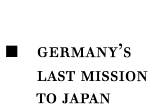


The latest edition of this work has been brought to publication with the generous assistance of Marguerite and Gerry Lenfest.
Naval Institute Press
291 Wood Road
Annapolis, MD 21402
1996 by Joseph M. Scalia
All rights reserved. No part of this book may be reproduced or utilized in any form or by any means, electronic or mechanical, including photocopying and recording, or by any information storage and retrieval system, without permission in writing from the publisher.
First Naval Institute Press paperback edition published 2009
ISBN 978-1-61251-525-0 (eBook)
The Library of Congress has cataloged the hardcover edition as follows:
Scalia, Joseph M., 1957
Germanys last mission to Japan: the failed voyage of U-234 / Joseph M. Scalia.
p. cm.
Includes bibliographical references and index.
1. World War, 19391945Naval operationsSubmarine. 2. U 234 (Submarine). 3. Blockade. 4. World War, 19391945Naval operations, German. 5. GermanyMilitary relationsJapan. 6. JapanMilitary relationGermany. 7. World War, 1939194Transportation. I. Title.
D781.S43 2000
940.545943 21dc21
99-043765
 Print editions meet the requirements of ANSI/NISO z39.48-1992 (Permanence of Paper).
Print editions meet the requirements of ANSI/NISO z39.48-1992 (Permanence of Paper).
9 8 7 6 5 4 3 2
For my grandfather, Chief Petty Officer Pasquale Joseph Scalia.
A veteran of the Silent Service of World War II, he first turned me to the sea.
Contents
BLOCKADE-RUNNING with German, Italian, and Japanese merchant vessels and submarines between German- and Japanese-controlled areas during World War II was of great importance to the Axis war effort. From the Japanese, Germany wanted mainly raw materials, especially raw rubber, but also zinc, tungsten, molybdenum, opium, and quinine. The Japanese were interested in operational German weapon systems like aircraft, tanks, torpedoes, and optical and radio location equipment, in addition to drawings and details of German technical advances. As long as the Soviet Union remained neutral, the Trans-Siberian Railroad could be used extensively for the exchange of such materials. The German invasion of Russia closed this route, leaving the sea route around Cape Horn as the only transport connection. With the United States entry into the war in December 1941, this route changed to a passage around the Cape of Good Hope.
From December 1940 to June 1941, five German merchant vessels departed Japan, with three arriving in western France. By February 1942, nine German and three Italian vessels had made the journey; three of these were sunk en route, with the remainder reaching the occupied French port of Bordeaux. In addition, seven German merchant ships departed Bordeaux and arrived in Japan. During the next navigation period in the winter of 194243, conditions were much more difficult because of the Allies use of MAGIC and ULTRA, which gave the Allies advance information about the movement of merchant vessels. Of fourteen German and one Italian blockade-runners that departed the Far East, four were sunk, four were forced to return to Japan, and seven reached Europe. The final attempt to send surface vessels from Japan failed; of five ships departing Japan, only one reached Europe, with the others being sunk.
The passage of submarines between Europe and Japan was not a new idea in 1943; in 1942 one of the big Japanese submarine cruisers completed a tour from Japan to France and back, only to be lost to a mine in Singapore Harbor. Out of necessity, in the spring of 1943 Japanese and German officials decided to use submarines for transport traffic. Initially, ten Italian submarines at Bordeaux were scheduled to be refitted as transports, but two were lost returning from patrol, with one retained as a combat boat. Of the seven that were reconfigured for the transport mission, three reached Japanese ports, two were sunk, and two never left Bordeaux before Italys capitulation. In 194344 the Japanese sent four submarines to Europe, but only one completed the round trip; two were sunk en route to France, and one was sunk between Singapore and Japan. German and Italian plans to build new submarines solely for the transport mission began too late. Although two Italian boats were completed, they were used in the Mediterranean, and German plans to construct thirty Type XX U-boats were canceled. The only remaining option was to utilize large U-boats previously designated for combat or minelaying operations.
One of these redesignated U-boats was sent to Japan as a gift from Adolf Hitler to his Japanese allies; it reached Japan and was recommissioned into the Japanese navy. A second boat reached Penang to explore the possibilities of the port as a base of operations. In 1943 Germany devised a plan, known as Monsun, which sent a ten-boat group to conduct combat patrols in the Indian Ocean. However, the Monsun plan resulted in disaster; Allied hunter-killer groups destroyed five of the boats in the Atlantic and one in the Indian Ocean, leaving four boats to arrive safely in Penang. Although these boats carried various materials to Penang, their primary task was to attack enemy shipping. A subsequent effort to send Type IXD/2 boats to the Indian Ocean in the transport and combat role failed; most of the boats were sunk en route to the Far East in the Atlantic. Of the eighteen Type IXD/2 boats that departed Penang between 1943 and 1945, six were sunk, six returned to Penang, and six more reached Europe. However, of the six that reached France and Norway, three were lost on their way to Germany, and one surrendered to the British at the end of the war.
Axis problems with blockade-running have been known for a long time. In 1955 Theo Michaux published the article Rohstoffe aus Ostasien in the Wehrwissenschaftliche Rundschau, which provided many details of the Axis transport effort. In the official British and semiofficial American series on the war at sea, S. W. Roskill and S. E. Morrison discuss the blockade-runners, and in 1981 Martin Bruce published Axis Blockade Runners of World War II, which was based on archival research in Germany, London, and Washington. However, the journey of the last U-boat from Germany, U-234, has been mentioned only occasionally in the historiography of the blockade-runners, notwithstanding the fact that one of U-234s passengers, Fritz von Sandrart, published his account of the trip, Japan Fahrt in die Gefangenschaft, in 1955. In the mid-1980s a great interest in U-234 erupted when it was discovered that the loading list of the boat included, among a great many other items, an entry for 560 kilograms of uranium oxide for the Japanese army. Questions and speculation arose as to the destination of the uranium oxide as well as the true nature of the material: Was it really radioactive uranium 235, as the two Japanese passengers of
Next page


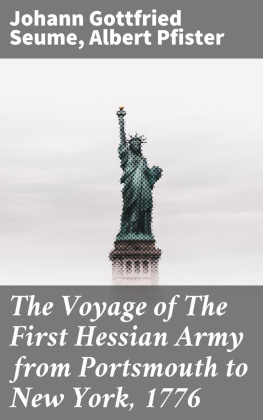
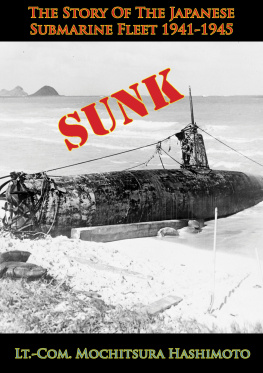

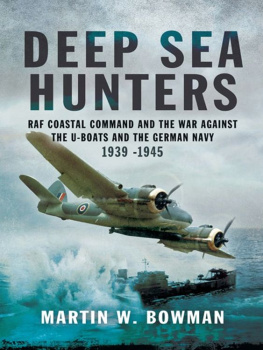
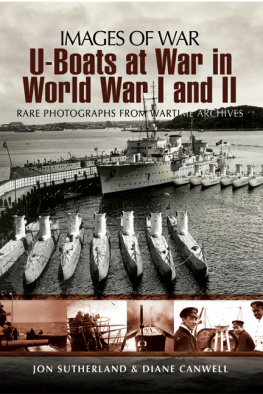
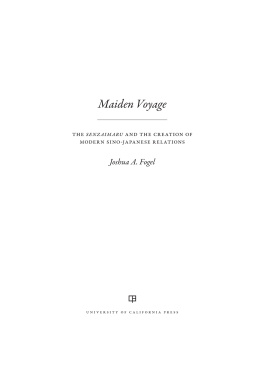



 Print editions meet the requirements of ANSI/NISO z39.48-1992 (Permanence of Paper).
Print editions meet the requirements of ANSI/NISO z39.48-1992 (Permanence of Paper).